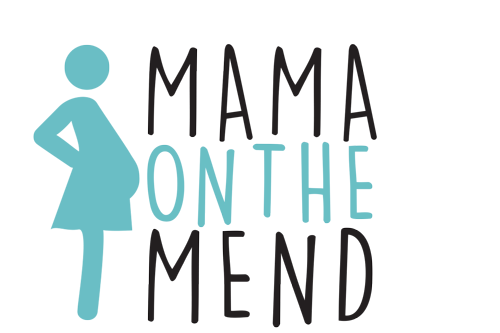10 Ways To Prepare for a Smoother Postpartum Recovery
/There was once a time when people who just gave birth were encouraged and expected to do little else than rest, recover, and nurse the baby. This was called lying in: a time for parent and infant to convalescence for the days and weeks after childbirth.
Some countries and cultures still honor the “lying in” period and it takes place up to the first three to six weeks after childbirth. It’s roughly the amount of time our bodies need to physiologically heal, the time when we schedule a postpartum checkup, and when we generally start to get into the rhythm of our parenting.
People who give birth in America are increasingly reclaiming this time and space. Some call it the fourth trimester. Others advocate for parents to cultivate their “village”—a support system of people dedicated to nurturing those in the postpartum stage.
Whether it’s “lying in,” the fourth trimester or the village, that postpartum period is crucial for our well-being. During the transitional weeks from giving birth to parenthood, we undergo incredible psychological, physical and emotional adjustments. We need to prepare for this postpartum phase with the same care and dedication we do our pregnancies and births.
Here are ten suggestions on how to support our postpartum progress:
1. Re-create that “lying-in” period for postpartum healing
It’s hard to predict how you’ll feel or how you’ll give birth. Regardless, it takes significant physical and emotional energy to get a baby out of your body. Even if you don’t think you’ll need a month of “lying-in” plan for it anyway so there’s less pressure on you to do anything other than feed the baby and recover. That means enlisting help and delegating domestic work, like cooking and cleaning, to family and friends before the baby is born. I know this is easier said than done!
Before you give birth, try to set boundaries with friends and family. This can be tough, I know. You may hurt feelings along the way. I know I did. Personally, I’ve found that it’s easier to have stricter boundaries first then relax them as we get a handle on a situation, versus creating boundaries on the go.
I remember visiting a woman who just gave birth and she had a list on her door outside her house for visitors. On it she graciously asked visitors to wash their hands upon entering, to limit visit time, which hours were best for her and her new family, and to help with one of several things: putting dishes away, heating up food, moving the laundry along, etc. I thought this was a clever way of reminding visitors about the parents’ needs, setting limits on their stay, and directly asking for help.
To help you get your plan on paper Amanda Lowe’s “Positive Postpartum Plan” from The Doula Guide blog offers a template for your planning. DONA International also offers a great postpartum plan guide to identify and coordinate help with food, cleaning, breastfeeding, older siblings, and the mom herself.
2. Put together your list of professional/medical help
“Mommy brain” is no joke. Have your list of medical professionals in one place so you don’t waste energy trying to google someone. Trust me, the simplest task becomes insurmountable when that baby is crying for food! On your list you may want your baby’s pediatrician, your OBGYN, a local lactation consultant, your pharmacy, Infant Risk Center (if you’re on medication), any relevant support groups, a postpartum doula, and/or specialists for any medical condition you have.
3. Make food prep part of your postpartum care plan
This is a popular “to do” for many pregnant folks. I’ve seen plenty Instagram pictures of freezers full of home-cooked meals. If you’re short on freezer space or simply don’t want to prepare all those meals on your own consider some of the following:
Have a friend set up a food train.
Request and have a few friends or family members stagger their pre-made or frozen meals over the weeks and months. Bust out a calendar and schedule it, if need be.
Go to a local (inexpensive, but not fast food) restaurant and order ala carte entrees. Put those into containers and freeze/store them. (That’s what we did.)
Don’t get meal kits like Blue Apron. It’s too much reading, standing, and actual cooking. Meal services that deliver “heat and eat” meals make much more sense during this time.
Don’t forget about bite size snacks.
Aim for food you can eat with one hand. Trust me. It’ll be a while before you have both hands free for eating.
4. Prepare a “kit” with some staples for postpartum healing
Depending on how you give birth, you may need different items. Regardless of how that baby comes into this world, you will bleed and need super absorbent pads. Also, you won’t want to strain going number 2, so prune juice or stool softeners help. These are just a few of the many items for your postpartum care at home. Click below for a more comprehensive list in a postpartum “kit.” Pro tip: designate a friend of family member to prep your kit immediately after delivery.
5. Seek out a pelvic physical therapist before and after you give birth
In the third trimester, the physical discomfort of pregnancy are at its height. Those swollen joints, achy muscles, and back pain won’t necessarily go away on their own after giving birth. (Spoiler alert, sorry!) We have postpartum hormones that keep our body in a similar pregnancy state where joints can feel loose and our skin feel different, especially “down there.”
A pelvic physical therapist (PT) can help you navigate that physical transition from your third to fourth trimester. They’re savvy about how hormones affect the mobility and strength of our pelvic organs and tissue. Culturally, we don’t have a strong postpartum tradition for physical healing. If anything, women feel pressure to “bounce back” and may start physical activity too soon after giving birth. This can exacerbate existing postpartum symptoms like a leaking bladder.
Whether you deliver vaginally or via C-section, that baby puts pressure on our pelvic floor and stretches out our core muscles. A pelvic PT can assess the function and alignment of your body in its most incredible state: pregnancy and postpartum!
6. Find ways to gently reconnect with you body
In that first postpartum month, I felt too injured to do anything physical. But that didn’t mean I should do absolutely nothing. After a long labor, hours of pushing, and birth injuries, I felt disconnected from my physical self. I felt broken and there were certain parts of my body I didn’t want to touch. This isn’t the case with everyone, but I know I’m in good company when it comes to struggles with relating to our postpartum body.
Remember those prenatal massages? Why not get postnatal ones too? Have a massage therapist come to your home, if you can afford it. Reconnecting could also be time spent in nature or doing belly breathing exercises.
There are also online programs that help postpartum women reconnect with their pelvic floors and ease them into strength-based exercises. The MUTU System is a medically recommended one. They have a community of over 50,000 women and tons of resources to help moms navigate postpartum changes to their bodies.
7. Hire a postpartum doula or night nurse
Family and friends can be wonderful help, but this isn’t always an option for new moms, especially those who live far away from their loved ones. Don’t go it alone. It’s worth examining your budget to include a postpartum doula or night nurse. In those tense and difficult moments navigating new motherhood, it might help to have a professional by your side. Check out CAPPA or DONA International for doula help.
8. Take your time recovering
This one sounds weird, right? Of course you’ll recover on your own time. This tip is more about checking our expectations about our postpartum recovery and progress. We have the six-week check up where many women get the “green light” for sex and exercise. Six-weeks is just an estimation. Depending on your OBGYN, you may only get checked for infections and whether your uterus shrunk back to size. Give yourself the space and grace for the ups and downs you’ll feel about your postpartum body for months to come.
I know I felt upset after getting that “green light.” Sex and exercise were the last things I felt like doing. My body still hurt and I felt like something was wrong with me because I wasn’t healing fast enough. I had significant issues like incontinence and weird scarring, and I sought the help I needed. It took me a while to ease up my own expectations about how quickly I should feel “normal.”
Even the American College of Obstetrics and Gynecology (ACOG) recently reassessed the six-week postpartum follow up in favor of more customized care. Check out ACOG’s guidelines that now includes earlier checkups and on-going follow up as needed.
9. Cozy up with some books or podcasts on the subject of postpartum care
I wish I could say that there’s no shortage of books or material on postpartum care, but there is! Unlike books on pregnancy or parenting, information on postpartum care is in short supply. That said, there are a handful of books and podcasts. I’m grateful they exist. They include, but aren’t limited to:
Kimberly Johnson’s The Fourth Trimester: A Postpartum Guide to Healing Your Body, Balancing Your Emotions, and Restoring Your Vitality
Heng Ou’s The First Forty Days: The Essential Art of Nourishing the New Mother
Kathe Wallace’s Reviving Your Sex Life After Childbirth: Your Guide to Pain-free and Pleasurable Sex After the Baby (This book is about so much more than sex after childbirth. It’s a great guide for understanding our postpartum bodies, written by a pioneer in pelvic physical therapy.)
The Longest Shortest Time podcast (Check out the host’s, Hillary Frank, earlier episodes about her birth story, healing from birth trauma, and other unique stories about creating a family.)
The Birth Hour podcast (This is a recent find, courtesy of a good friend. I like the range of stories. There’s something for almost everyone.)
10. Let people help
I don’t know why, but this is tough for a lot of us, especially when we feel vulnerable and need help the most.
There are many ways to do this. The key is to really consider what we may want and need during those few weeks. Take some time to plan and research what resources are out there for you, whether they're family, friends or services in the community. Don’t be afraid to ask. People want to help. Give them direction.
If we’re lucky enough, we may already be part of a group or community with strong postpartum traditions and support. Even still, it can help to take stock of our postnatal “village” and call those members to action.
Have you thought of postpartum planning? What are some ways you’re planning for self-care in those early postpartum weeks? If you’re already a mom, what were some of your postpartum challenges? How did you get or ask for help?
*Updated from June 15, 2016
**Medical disclaimer: This post is provided as information and resource only. This information should not be used as a substitute for professional diagnosis, treatment, or advice. Always seek the guidance of your physician or other qualified health care provider with any questions you may have regarding your postpartum care and conditions.
Affiliate disclaimer: This post contains affiliate links, which may offer a small commission that helps maintain this website. You won’t pay more through purchasing through these links. All of the products I share in this post I’ve personally used and have found helpful in my recovery. I am not paid to promote any individual items found on this page.












